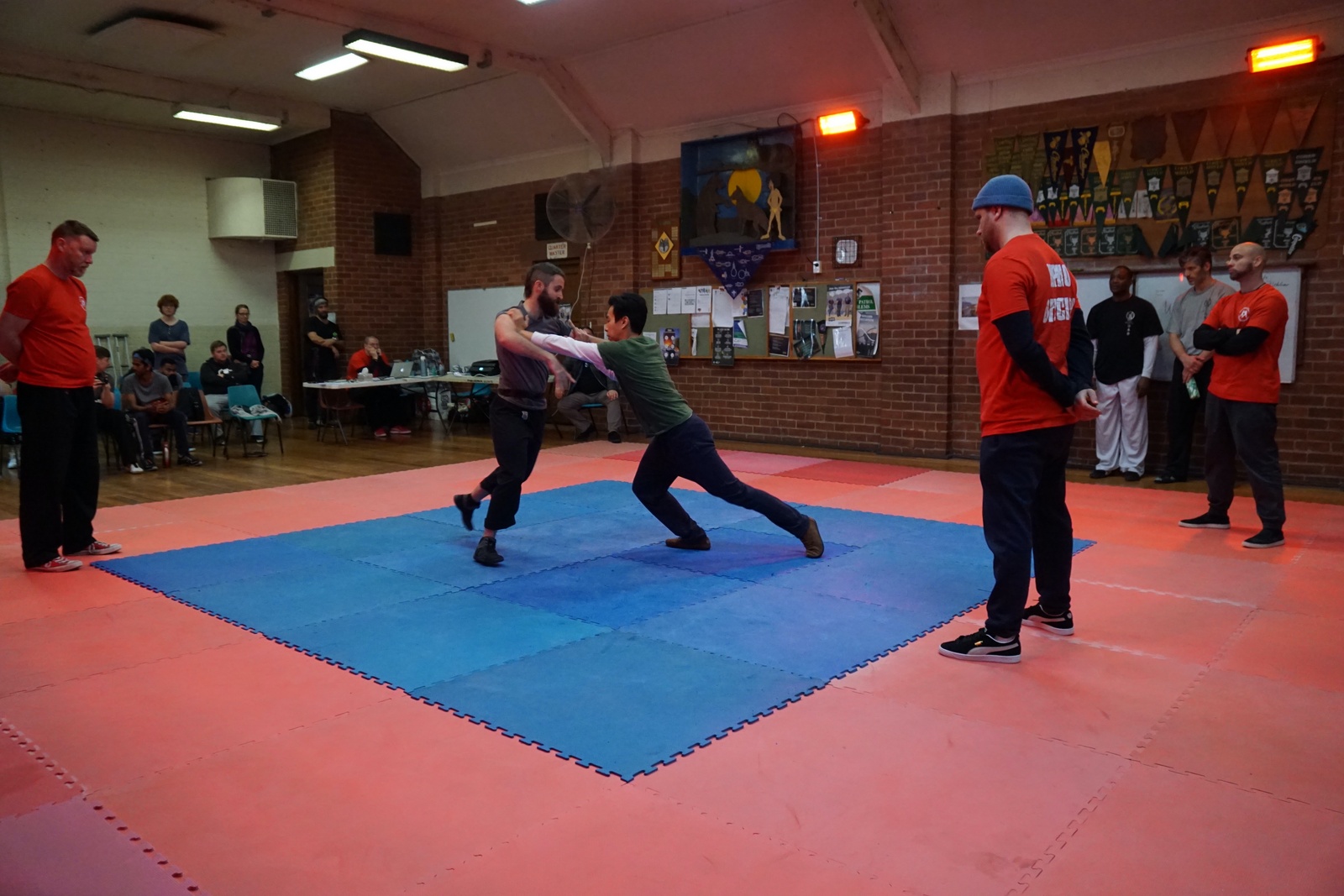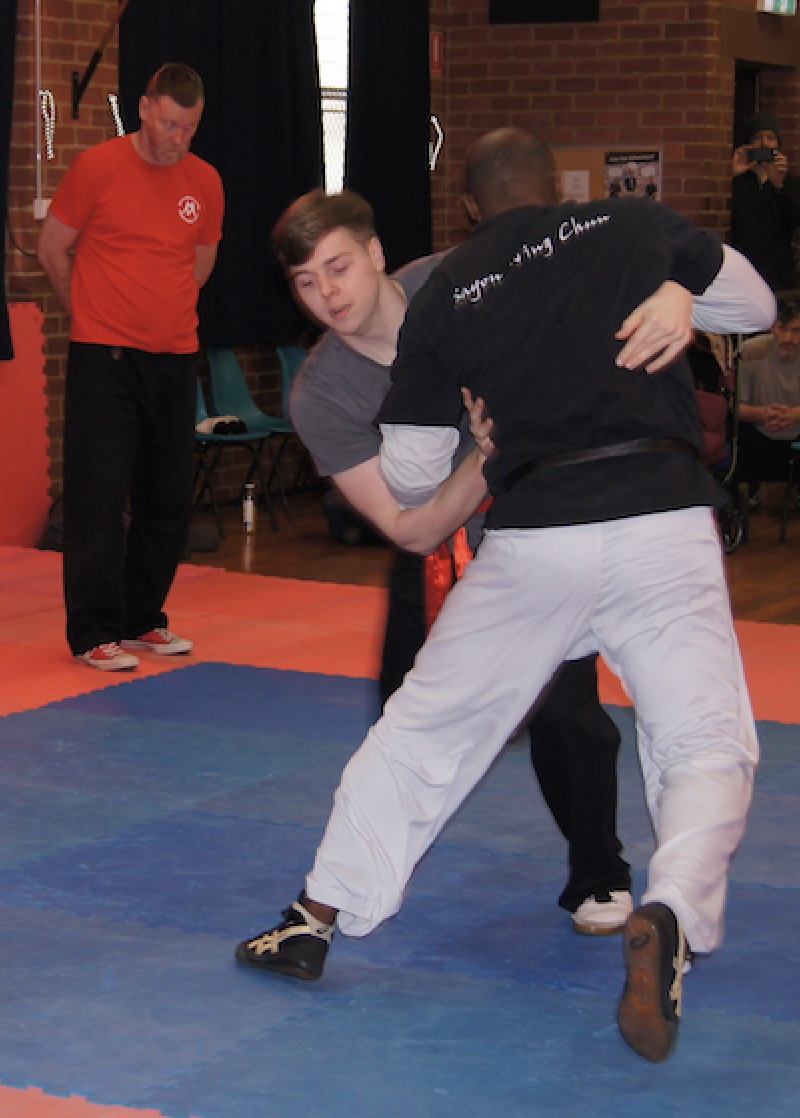This page gives an overview of the MPHO format and rules - however, the organisers reserve the right to update rules and progressively change the format - the updated rules and format document is provided to registered competitors. The current version can be downloaded from the link labelled 'RULES & FORMAT PDF':
 ave elected to remove or limit the more dangerous techniques, notably throws.
ave elected to remove or limit the more dangerous techniques, notably throws.
 The MPHO competition format involves moving step push hands within a competition area, with two distinct phases (a pool phase, then a knockout phase). A competitor may win at different levels:
The MPHO competition format involves moving step push hands within a competition area, with two distinct phases (a pool phase, then a knockout phase). A competitor may win at different levels:
NOTE – the knockout phase may be divided into weight categories, at the discretion of the organisers, depending on the number of competitors
Mixed men & women (may change, depending on demand)
Over 16 – no upper age limit, but participation is discouraged for seniors in the current format. 16-18 year olds will require guardian consent
Protections are strongly recommended, but not mandatory:
Competitors must produce